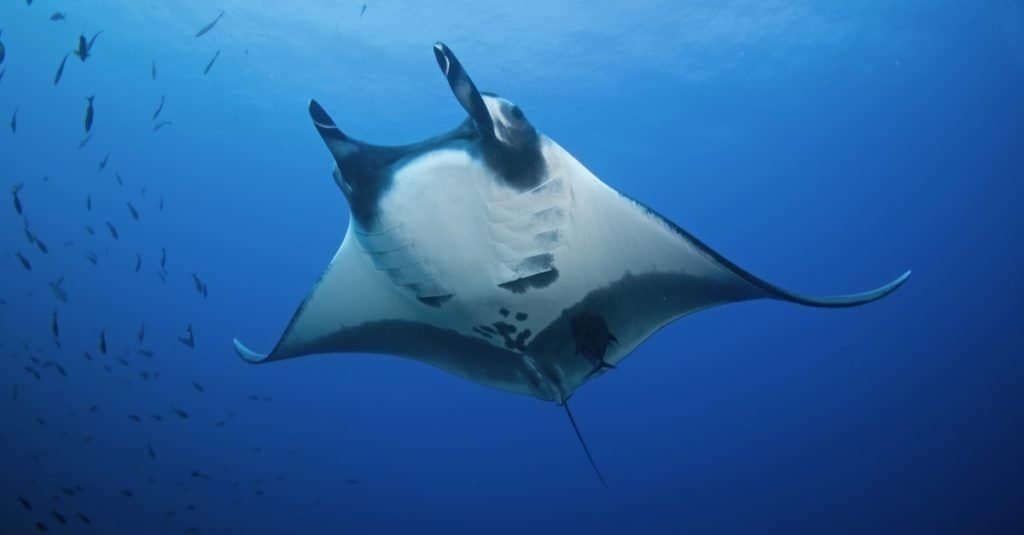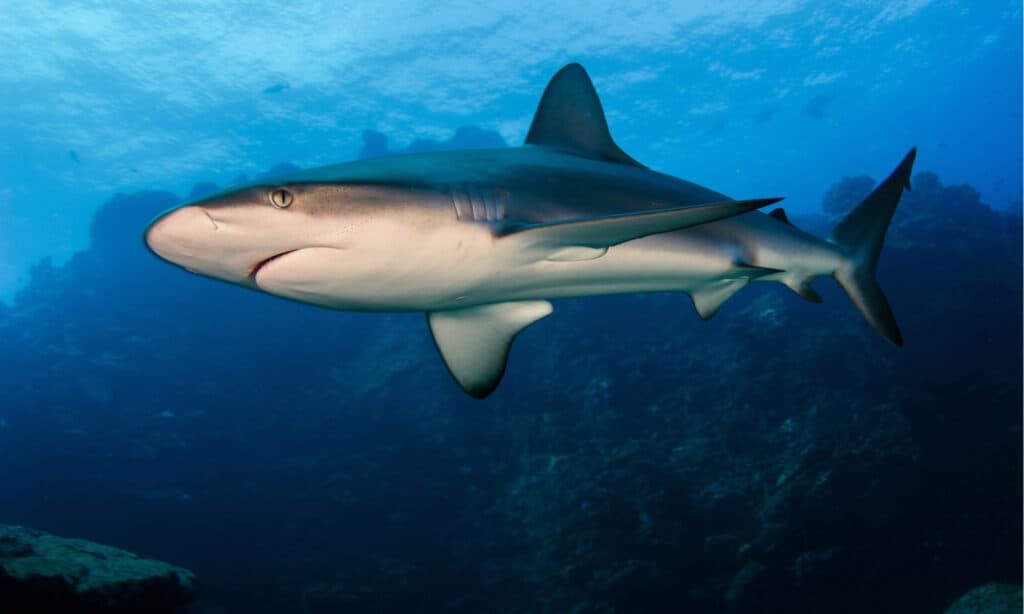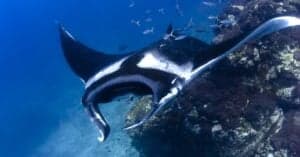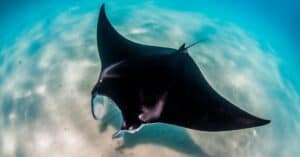Manta rays, often referred to as the devilfish, are one of the unique members of the marine ecosystem. There are distinctly only two species of manta rays belonging to the genus Mobula – the Manta birostris (giant oceanic manta rays) and the Mobula alfredi (reef manta rays).
As sea creatures, manta rays only live and survive in water and are most comfortable in temperate water bodies relatively above 68 F or 20°C. Being particular about this specification, both species of manta rays give in-depth consideration to the kind of water body they inhabit.
The reef manta rays dominate the tropical and subtropical areas, while the giant oceanic manta rays dominate the open ocean and productive coastal areas. Regardless of the water body, these two manta rays never lose sight of ocean areas rich in nutrients and are capable of attracting prospective prey to their slaughter stake.
This brings us to ask just how dangerous manta rays are – if they are. We’ll find the answer to that in this article.
Background on Manta Rays

Manta rays have two horn-shaped fins protruding from the front of their heads, which has also given them the nickname “devil fish.”
©Martin Prochazkacz/Shutterstock.com
Unlike manta rays, stingrays are modified with barbs and a venomous spine making them very dangerous compared to manta rays. Nevertheless, these two rays are members of the Chondrichthyes class having cartilaginous membranes and including a diverse group of fishes like skates, sharks, guitarfish, Chimaeras, and sawfish.
Moreover, being deep-sea sea creatures like the baleen whale, both species of manta rays are classified as filter feeders. One fascinating fact that distinguishes them from other marine creatures is their unique style for consuming large amounts of zooplankton, including varying amounts of crab larvae and krill, channeled through a filtering structure. The manta ray causes its sea meals to sift through rows of tiny rakes with its mouth wide open, collecting as much as it can with its cephalic fins and gill arches.
Are Manta Rays Dangerous?

Manta rays are not dangerous to humans.
Neglecting their stereotypical name, devilfish, manta rays are not dangerous. Interestingly, they can be friendly and even swim with humans. Unlike sharks, manta rays do not have large sharp teeth; they can only employ the filtration mechanism in their mouth to eat their food which also includes little fish. The manta ray’s feeding style and the absence of barbs and venomous spine like the stingray make it a relatively harmless sea creature.
Mating and Reproduction in Manta Rays
One term that remains closely associated with the reproduction process for manta rays is the term used to bridge between egg-laying and live-bearing animals – ovoviviparity. Male manta rays sexually cling to the consenting female ray while planting a subtle bite on their pectoral fins. Now in a close-up position with both abdomens lapping over each other, the male ray inserts a clasper into the cloaca of the female ray, which births reproduction. As ovoviviparous sea creatures, the eggs housing the developing embryo remain in the mother manta ray’s body until the eggs are due for hatching in shallow waters.
Generally, manta rays can live up to 40 years, giving birth to only one or two pups rotationally every two years. These marine creatures have an average gestation period of 12 to 13 months.
What Sea Animal Eats Manta Rays?

Sharks eat manta rays.
©Tomas Kotouc/Shutterstock.com
Luckily for these marine vertebrates, large-sized manta rays intriguingly ward off or scare intending predators. However, this ability to scare off predators is not handy when faced with large sharks and killer whales. At least for the record, in Galapagos and New guinea, these two sea mayors (sharks and killer whales) give no second thought when hunting down their favorite meal course.
Relationship Between Manta Rays and Humans
Manta rays have been classified as a threatened species that are just a whisker away from extinction. Aside from predation by large sharks and whales, most human activity has adversely affected the population of these sea wonders.
Aside from their edible flesh, manta rays are often hunted to harvest the medicinal gill raker, which is inculcated into traditional Chinese medicine (TCM).
Since they are often entangled and susceptible to suffocation, manta rays must swim continuously to flush off water rich in oxygen over their gills. Sometimes, they may collide with fishing nets and get stocked while this is done. Their inability to swim backward weighs heavily on them in such situations, but they nonetheless attempt to roll in a bid to liberate themselves.
Other Exciting Facts about Manta Rays
In a move to maintain a healthy lifestyle, manta rays are often found visiting coral reefs or cleaning stations to get rid of parasites.
Interestingly, cleaner fishes located at the surface of the reef effortlessly do the cleaning jobs by simply consuming the parasites that linger around or on the body of the giant manta rays. Other fishes that fall under cleaning agents include wrasses domiciled in Hawaii.
Manta rays are self-aware and intelligent sea creatures, and in 2016, a documentary confirmed this theory as it filmed a giant manta ray checking out its reflection. What more? On manta rays’ self-aware nature, these marine vertebrates are seen retracing their path to the same coral reefs to get cleaned up at every given interval.
Moreover, aside from visiting coral reefs to get cleaned up, manta rays sometimes breach (partially or wholly leaping off the water) as they go about their daily business.
Sometimes, when manta rays breach, they do so for hours to escape from predators or get rid of small amounts of parasites around their bodies.
The International Union for the Conservation of Nature listed these deep-sea creatures as vulnerable. However, they are 100% safe-guarded in international waters by the Convention on Migratory Species of Wild Animals.
The photo featured at the top of this post is © Aaronejbull87/Shutterstock.com
Thank you for reading! Have some feedback for us? Contact the AZ Animals editorial team.







